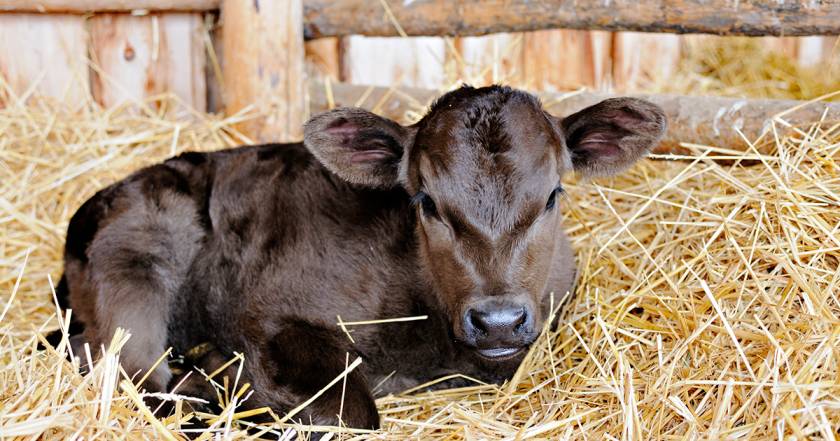Stressful Cold Conditions For Calves

Snow flurries are usually not a common around Halloween in our region, but this year we have already seen flurries. With the temperatures decreasing, we need to keep cold stress in calves in mind.
Cold stress begins impacting calves growth and health earlier than you may think. When temperatures drop to around 60 degrees fahrenheit, cold stress could take place to calves that are under the age of 21 days. As calves become older than three weeks, they can start to show signs of cold stress when temperatures dip below 42 degrees.
Keeping your calves safe during cold stress times has some money saving benefits. During cold stress times it is important to maintain proper nutrition to support their growth and immune system. When you can get your calves to perform early on in their growth stage the more it will equal more growth later.
Critical temperatures for beef cattle are influenced by both environmental and animal factors including hair coat and body condition. Below are the critical temperatures that calves and cattle will consume more energy in order to keep warm.
Here are a few tips to mitigate stressful cold conditions for calves:
Warm Water
Provide warm (101-102 degrees fahrenheit) fresh, free choice water to your calves. The warm water will help them conserve their energy. If a calf drinks cold water, they will use more energy to warm the cold water to turn it into their core body temperature.
Calf Jackets/Wind Break
From an award-winning children’s book Click, Clack, Moo: Cows That Type by Doreen Cronin, the cows in the book wanted heated blankets from Farmer Brown. Well in this case, calves could benefit from a calf blanket, not necessarily heated though like in the children’s book. If calf blankets are used, it is important to ensure the blankets are clean, dry and adjusted correctly to each calf’s size. When a calf’s coat is wet, the coat loses the insulation factor, which is air trapped between hair fibers. Another advantage with a blanket is protecting the calf from the wind. Other potential wind breaks in the absence of blankets could be a well-ventilated building, stack of big bales, woods, brush, fencerows and hallows.
Dry Bedding
It is imperative to provide a thick layer of clean and dry straw to your calves. This will help the calves trap in warmth and minimize heat loss. A good indication that you have a thick layer of straw is when you are unable to see the calf’s legs when it is laying down, because their legs are snuggled into the bed of straw. The dry bedding helps keep the animals clean and provides insulation to them from the mud or frozen ground.
Energy
Calves are very limited for energy during cold weather. Ensure that the calves have a sound diet of protein to maintain their energy in colder temperatures, which will in turn help providing enough energy for the calf’s body to maintain its core temperature. Supplementing with grain or by-products is another strategy, especially if forage is low.
The two most important factors in calf survival are warmth & nutrition. Keeping the calf warm helps them maintain their core body temperature and the proper nutrition provides them with energy it needs to survive. Always consult with your sales specialist for adequate nutrition and supplement for your operation.